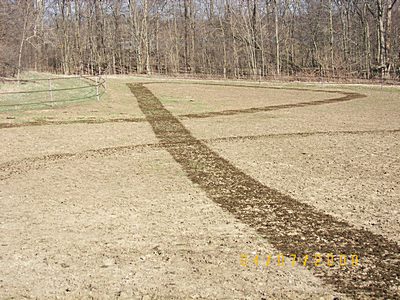Traditional "Box-Type" Spreader |
The "Rotary" Spreader |
- Damage may occur if manure is too wet and/or heavy
|
- ROTATING DRUM makes manure weight work FOR you! (70% moisture or less is best)
|
- Stuck or wedged manure stops all spreading
|
|
|
- NO chains or cables to break
|
|
- Structural steel expanded metal drum powder coated for corrosion resistance
|
|
|
- Pasture unusable until waste has dissipated (sometimes taking a year or more)
|
- Shredded manure dissiptes within 2 weeks of spreading, allowing horses to return to the pasture MUCH soon.
|
- Discing or dragging fields is often needed
|
- Manure already shredded. No need to disc or drag.
|
- Large chunks fly out creating fly breeding hotspots
|
- Shredded manure dries quickly, virtually eliminating fly-breeding potential.
|
- Hay, long grasses, or twine may jam blades and break chains
|
- Uneaten hay collection system prevents clogging or jamming
|
- Heavy tongue weight when filled with manure. Weight makes it difficult to move and hitch up
|
- Weight balanced in four-wheeled frame keeps weight off of movable hitch
|
- Turning and spreading is virtually impossible due to one tire driving the blades and the other tire dragging the manure to the blades
|
- Tires have one job only: turning the rotating drum. This insures a nice even spread of manure, even in the tightest of corners. (see below)
|
 |

